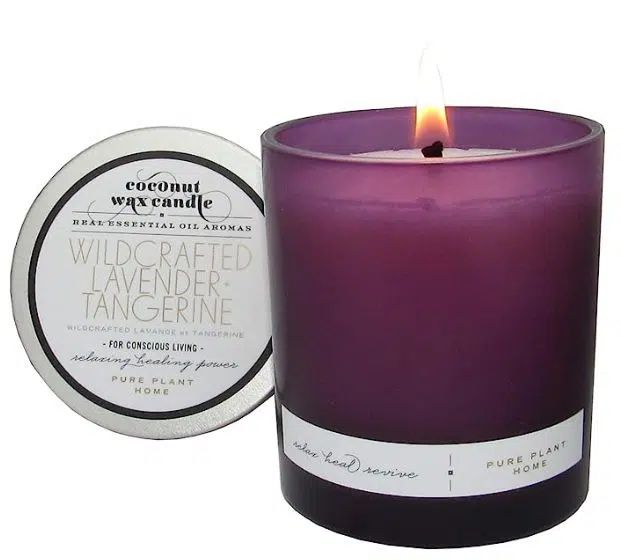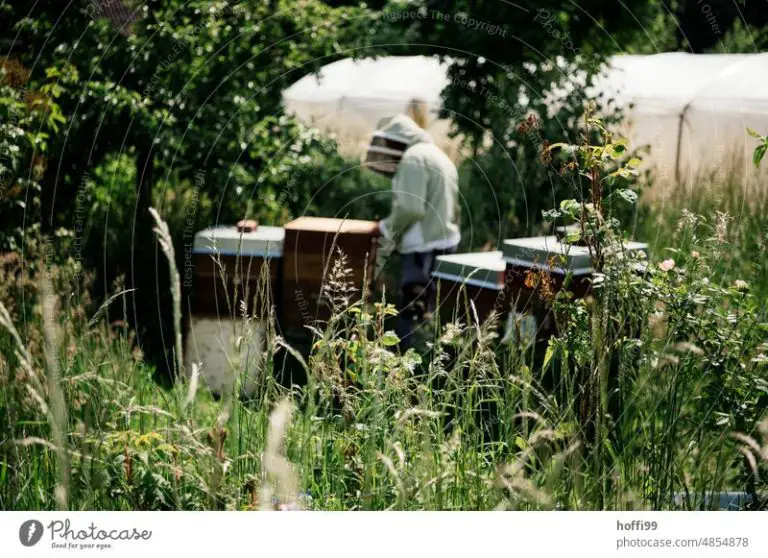What Kind Of Wax Does Bath And Body Works Use For Candles?
Bath & Body Works is a popular retailer known for their wide variety of scented home fragrance products, particularly their collection of candles. The company sells a range of candle products including single wick candles and 3-wick candles in a variety of scents. Bath & Body Works candles come in beautiful glass containers with fun and trendy packaging. They are one of the most recognizable scented candle brands.
Bath & Body Works offers candles made from different wax varieties, allowing customers to choose their preferred option. The specific waxes used help create a quality, long-lasting product that burns evenly. Understanding the candle ingredients provides insight into Bath & Body Works’candle-making process.
Paraffin Wax
Paraffin wax is the most common candle wax used by Bath & Body Works (1). It is derived from petroleum and is a byproduct of oil refining. Paraffin wax is highly refined and purified, making it odorless and colorless. It provides excellent fragrance throw in candles and has a high melting point which allows candles to retain their shape while burning. Some concerns have been raised about paraffin wax releasing small amounts of carcinogens when burned, but studies have shown the levels are negligible and pose little health risk (1). Paraffin remains popular for candle making because it is inexpensive and easy to work with compared to natural waxes.

(1) https://www.bathandbodyworks.in/bbw-products.html
Soy Wax
Soy wax is a natural wax made from hydrogenated soybean oil. It was first commercially produced in the 1990s as an alternative to paraffin wax, which is a petroleum byproduct.Bath and Body Works began using soy wax in their 3-wick candles in 2003 as part of an effort to use more natural ingredients.
The main benefit of soy wax compared to paraffin wax is that it comes from a renewable resource. Soybeans can be grown sustainably each year, while paraffin wax relies on non-renewable crude oil. Soy wax is also biodegradable and releases no toxic chemicals or smoke when burned. Many people find the natural soy wax has better scent throw and aroma than paraffin candles.
However, soy wax is softer than paraffin wax and can be more prone to issues like frosting, wet spots, and sweating. This is why many candle makers blend soy wax with small amounts of paraffin or other waxes. Bath & Body Works states their candles contain a blend of soybean and paraffin waxes to optimize performance.[1]
Beeswax
Beeswax is a natural wax made by honey bees. Beeswax is secreted by worker bees from four pairs of glands on their abdomens and used to construct the hexagonal cells of the honeycomb (Source: https://www.ebay.com/b/Bath-Body-Works-Beeswax-Decor-Candles/46782/bn_7856589).
Unlike paraffin wax, beeswax is completely natural and non-toxic. It does not release harmful chemicals when burned and emits a faint honey-like scent. Beeswax has a lower melting point compared to other waxes, so it is commonly blended with paraffin or soy wax to make it more suitable for candle making (Source: https://www.bathandbodyworks.com/g/all-candles).
Some of Bath & Body Works’ candle lines like the Honey line use pure beeswax while others blend beeswax with soy, paraffin or palm waxes. The natural properties of beeswax make it an attractive option for eco-conscious consumers (Source: https://bath-and-body-works.beeswaxcandles.biz/).
Palm Wax
Palm wax is made from palm oil and is commonly used as a vegan alternative to beeswax in candles. According to Bath & Body Works’ website, some of their candles contain a proprietary blend of palm wax sourced through their partnership with the Roundtable on Sustainable Palm Oil (RSPO).
As a vegetable wax, palm wax burns cleaner than paraffin wax and is biodegradable. It is harder than soy wax, so it can help retain a candle’s scent when burning. However, palm wax has a lower melting point compared to beeswax, so candles containing palm wax need to be burned at cooler temperatures to avoid tunneling.
While palm wax itself is vegan, there has been some controversy around the palm oil industry’s environmental impact. However, by using palm wax certified by the RSPO, Bath & Body Works aims to source this ingredient sustainably. Overall, palm wax allows the company to offer high-quality vegan candle options.
Coconut Wax
Coconut wax is made from hydrogenated coconut oil. It has a high melting point and holds fragrance oils well, making it a popular candle wax. Coconut wax is praised for being a clean-burning wax without produing a lot of soot or smoke. According to Bath & Body Works, coconut wax “contains natural ingredients, features excellent scent retention, and burns cleanly without excessive halo effect” (https://www.bathandbodyworks.com/p/vanilla-coconut-surf-3-wick-candle-026788511.html).
Wax Blends
Bath & Body Works uses custom blends of different waxes to achieve optimal burning and scent throw in their candles. According to Bath & Body Works, their candle wax contains a mix of paraffin wax, soy wax, and other natural waxes like coconut and palm waxes. They do not disclose the exact ratio of the wax blend, as it is proprietary information, but blending different waxes allows them to capitalize on the benefits of each wax.
Paraffin wax provides a smooth appearance and excellent scent throw. Soy wax is made from soybeans, and offers a clean burn with little soot. The natural waxes like coconut and palm wax add hardness for a longer burn time and minimal melt pooling. By expertly blending the waxes, Bath & Body Works aims to create a customized formula that allows their candles to emit fragrance evenly, burn slowly and cleanly, and minimize issues like soot and tunneling.
A blend allows them to balance important candle qualities like fragrance, burn time, appearance, and performance. As competitors have resorted to more natural wax blends in recent years, Bath & Body Works continues to innovate their proprietary paraffin-soy blend to remain the leader in home fragrance.
Fragrance Oils
Bath & Body Works uses fragrance oils to add scent to their various candle products. Fragrance oils are blended from essential oils and aroma compounds to produce complex scents that mimic natural fragrances. Some of the most popular fragrance oils used in Bath & Body Works candles include:
Winter Candy Apple – A sweet combination of red apple, winter rose, candied orange, fresh pine, and maple cream. Source
Mahogany Teakwood – Blends mahogany, cedarwood, black oak, and frosted lavender. Evokes a masculine woodsy scent. Source
Japanese Cherry Blossom – Mimics the delicate floral aroma of cherry blossoms with notes of Asian pear, fuji apple, and white jasmine. Source
Eucalyptus Spearmint – An invigorating herbal blend with top notes of eucalyptus, spearmint, and lemon. Source
Bath & Body Works works closely with expert perfumers to develop proprietary fragrance oils that become signature scents for their brand. The quality and complexity of their fragrance oils is a key factor in their candles’ popularity and loyalty from customers.
Wick Materials
The wick is a key component of candles that affects how the candle burns. Bath & Body Works uses different types of wick materials in their candles, including cotton, wood, and paper
Cotton wicks are the most common type used in candles. Cotton burns evenly and provides a bright flame. However, cotton can produce more soot than other wicks.
Wooden wicks create a pleasant crackling sound when burning. They tend to burn cleaner than cotton with less soot. However, wooden wicks may need to be trimmed more often.
Paper wicks are flat and braided. They produce minimal soot and curl as they burn, which promotes even burning. However, paper wicks may not be as strong as other materials.
The wick material affects how quickly the wax pool forms, how high the flame burns, how much smoke or soot is produced, and more. Bath & Body Works likely uses different wick types to complement the different candle fragrances, vessels, and formulas. This helps create the ideal burn for each candle.
Conclusion
Bath & Body Works uses a variety of different waxes for their candle making, each with their own unique properties and benefits. The most common wax types are paraffin, soy wax, palm wax, coconut wax, and beeswax. Paraffin wax is derived from petroleum and is the cheapest option, though not as environmentally-friendly. Soy wax is made from soybeans, burns cleanly, and holds fragrance oils well. Beeswax produces a subtly sweet scent when burned and has a beautiful natural honey color, but can be more expensive. Palm wax comes from palm oil and offers excellent scent throw. Coconut wax comes from coconut oil and provides a smooth wax pool and clean burn. Bath & Body Works likely uses blends of these waxes to optimize the performance and scent of their candles. The different waxes allow flexibility in scent, appearance, and burning characteristics. Overall, Bath & Body Works utilizes quality waxes to create safe, long-lasting, and great smelling candles.



